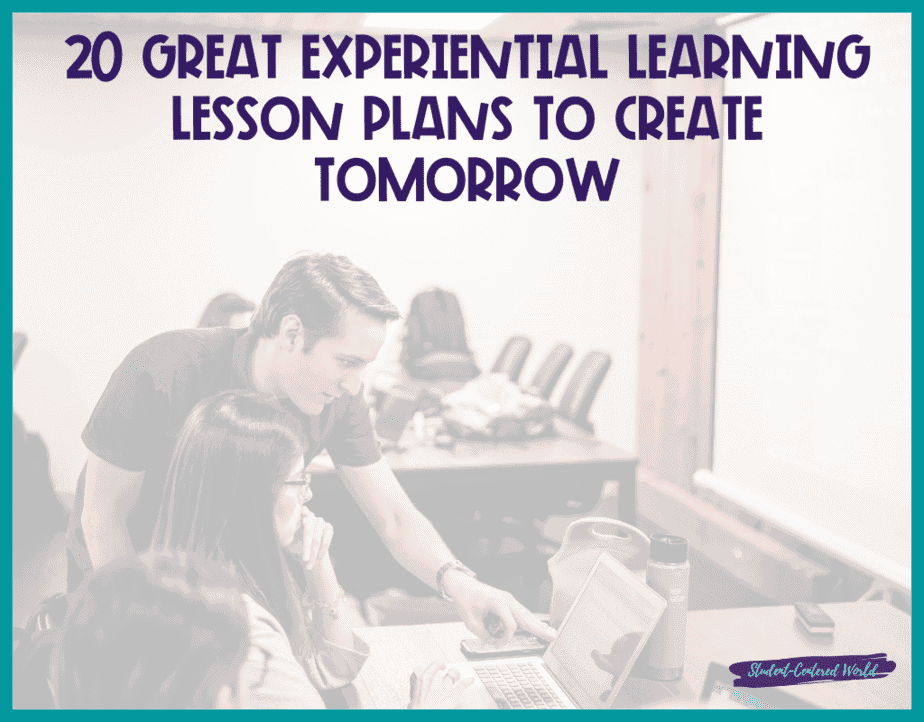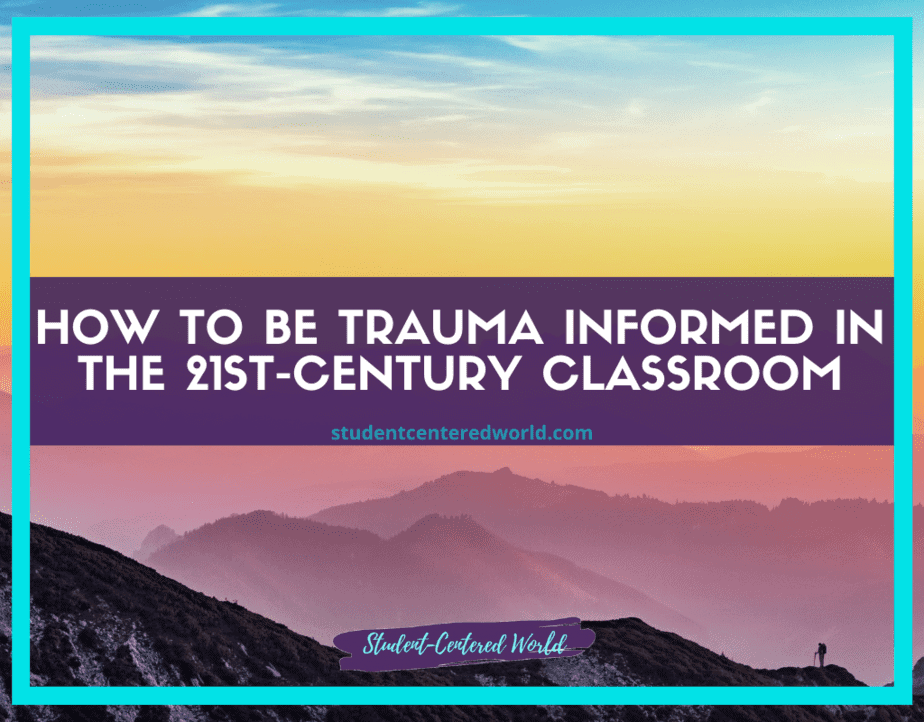20 Great Experiential Learning Lesson Plans to Create Tomorrow
After teachers learn all about the benefits of a hands-on learning experience, they almost immediately start searching for experiential learning lesson plans. While there are a lot of them out there, sometimes it seems as though the same few get recycled over and over again. Why not use this list to shake up a tired routine?
What is experiential learning?
Experiential learning happens when students are actively engaged in a lesson instead of passively receiving information. If you’ve ever taken an interpretive walk through the woods, or if you have ever had your class visit an art museum, then you’ve experienced experiential learning firsthand. It’s one thing to read a textbook about the Civil War, but it’s another thing entirely to stand in Gettysburg or reenact a battle from that era.
This type of learning is beneficial for many reasons:
It makes lessons more engaging for students and allows teachers to assess how well they understand a topic by seeing whether they can apply what they know on their own. It encourages creativity and critical thinking, which are skills that will stay with them for the rest of their lives.
It provides a context for the information that students are learning, which makes it easier to remember. If you think back to your own schooling, most likely the moments that stand out to you the most are ones that had an active element to them.
Experiential learning lesson plans also help teachers develop their skills. Many of them are student-centered, which means that the teacher is more of an assistant than an instructor, but is still the biggest “reference” in the room. This is an ideal situation for educators because they are able to take a backseat and hone their facilitation skills at the same time.

The Benefits of Experiential Learning Lesson Plans
You might have already realized some of the benefits of using experiential learning lesson plans, but you can’t fully understand until you’ve tried it for yourself. Take a look at these reasons why experiential learning lesson plans are so great:
- They provide students with authentic experiences that they will draw on later in life
- They keep things fresh by introducing new activities on a regular basis
- They give students opportunities to think critically and solve problems on their own terms
- They promote interaction between peers and allow them to share information with each other.
- They encourage teamwork, which is beneficial because teams can accomplish more than individuals can.
It goes without saying that they will also help students remember the concepts they’ve learned, but there’s even more to this than meets the eye. The memories that students form during experiential lessons are more likely to stick with them because they’ll be able to draw on these experiences later in life.
On top of this, experiential learning lesson plans have been linked time and time again to increased engagement among both teachers and students because it helps them feel like they can connect to their lessons in a way that they couldn’t through traditional methods.
It’s easy to see why so many teachers are opting for this type of lesson plan, but simply deciding on one isn’t enough. Once you’ve settled on the topic, it’s time to decide how you’re going to carry out your plans. Here are some tips for creating an experiential learning lesson plan that will make the most of this approach.
Examples of Experiential Learning Lesson Plans
Whether you’re teaching students to read, writing a lesson on cellular mitosis, or just trying to come up with something to do this Saturday morning, here are 40 experiential learning lesson plans to get you started:
(1) 3D Challenge – This hands-on learning lesson plan focuses on developing thinking skills that come from abstract thought. The goal is to display creativity in 3D art without using the traditional medium of paint.
(2) Academic Games – Academic games are some of the best ways to provide students with an experiential learning experience because they typically require a certain level of creativity. This one has kids working together in teams to complete trivia challenges that test their knowledge of historical events.
(3) Athletic Skills – These sports-based learning lesson plans encourage students to develop collaboration and communication skills while teaching them the rules of the game. The active nature of it makes it a perfect option for learning centers while helping kids get active at the same time.
(4) Board Game – One way to provide hands-on learning in your classroom is by adapting board games for academic purposes. You can make your own, have your students make their own, or use ones that already incorporate the elements of your content.
(5) Building with Legos – The hands-on nature of this experiential learning lesson plan makes it ideal for all students, but particularly for those who are tactile learners. It provides the opportunity to learn geometry while allowing them to connect to their creative side.
(6) Collaborative Drawing – This lesson plan is all about creative expression, which means that it’s perfect for visual learners. By allowing kids to work together on a single drawing, they’ll be able to see how others interpret the topic in their own unique way.

(7) Collages – In this experiential learning lesson plan, kids will work together to create a completed piece of art that expresses something they have learned. This is a perfect option for students who understand information better when it’s presented visually.
(8) Comic Strip – In this experiential learning lesson plan, students will write a short comic based on the topic they’ve been studying. It’s a great way to encourage reading comprehension and provides a break from traditional note-taking.
(9) Comparing Objects – This experiential learning activity allows kids to express themselves creatively while fueling their natural curiosity. In this example, kids will compare and contrast objects from the curriculum before creating a richly decorated graphic organizer to summarize what they’ve learned.
(10) Computer Games – While most computer games are purely entertainment, a few have been created to make learning fun as well. By creating your own or adapting existing ones, you can provide kids with a new platform for engaging with the material.
(11) Cooperative Challenges – In this experiential lesson plan, students work together in teams to complete physical challenges that test their knowledge of vocabulary words. It’s an engaging option that is perfect for reinforcing the meaning of new words.
(12) Cooperative Games – Cooperative games are a fun way to engage students in experiential learning lesson plans. In this example, kids work together in teams to solve word problems that integrate math concepts into the real world.
(13) Creative Writing – In this experiential learning activity, kids will learn about a famous person by writing their own biography from the perspective of the person they’re learning about. This is perfect for visual and auditory learners alike.
(14) Cultural Objects – In this experiential lesson plan, students will explore cultural objects from the time period they’ve been studying to create a class display or museum exhibit. It’s a way to get kids interested in their studies while creating a useful bulletin board or display.

(15) Dissecting Objects – This experiential learning activity allows kids to explore the world around them while also providing a hands-on way of understanding important scientific concepts that will help them better understand what they’re being taught in the classroom.
(16) Dramatic Play – In this learning activity, kids will use dramatic play to express what they’ve learned about a topic. This is an effective option for all types of learners, but especially those who learn best through movement and creative expression.
(17) Drawing Summaries – The artistic nature of this experiential learning lesson plan makes it perfect for students who are visual learners. By allowing kids to draw what they’ve learned, they’ll be able to retain the information better and provide a concrete piece of evidence that can be used for future reference.
(18) Drawing Designs – With these experiential learning lesson plans, kids will take a break from traditional note-taking and express their understanding of a lesson by designing patterns or graphics that relate to the topic at hand. It’s an effective way to test comprehension.
(20) Scavenger Hunt – In this experiential teaching activity, kids will work in teams to complete a scavenger hunt through the classroom, textbook, internet, notebooks, etc. that tests their knowledge of the specific topic they’ve been studying. It’s a great option for any subject area and makes a perfect partner activity.
Stop Driving the Teacher Struggle Bus
Are you struggling with student engagement, apathy, or keeping your class on track?
💫💫 There’s hope! 💫💫
Join my free teacher workshop “Choosing Choice” and in just 60 minutes, you’ll craft a practical plan to revitalize your teaching. Discover the magic of student choice in boosting engagement, gain quick implementation ideas, and explore strategies for year-long success.
Unlike overwhelming workshops, my approach guides you in real-time, providing more classroom options, reducing stress, and giving you more personal time.
Plus, you’ll earn a 1-hour professional development certificate and have 7 days of access.
Don’t miss this chance to transform your teaching; click below to secure your spot now!






